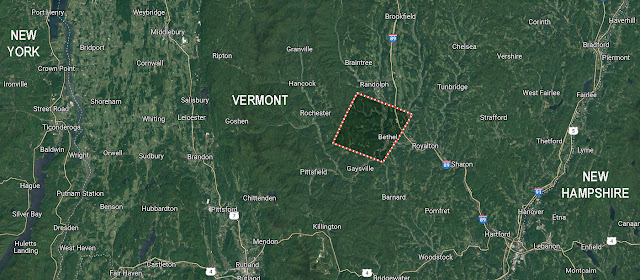A digest of events, trends, issues, ideas and journalism from and about rural America, by the Institute for Rural Journalism, based at the University of Kentucky. Links may expire, require subscription or go behind pay walls. Please send news and knowledge you think would be useful to benjy.hamm@uky.edu.
PAGES
▼
Monday, July 17, 2023
Vermont town’s lessons from 2011 flood reflected in less damage last week; 'tree huggers' became 'culvert huggers'
Bethel, Vermont, has seen more than its share of heavy rainfall, and its hard-won lessons of the past helped it weather last week's flooding with less damage, reports Frances Mize of the Valley News in West Lebanon, N.H., and White River Junction, Vt.
"The town has learned the hard way how to buckle down during a big storm," Mize writes. "In August 2011, Bethel incurred over $5 million in damage to public infrastructure during Tropical Storm Irene, the most of any town in the state, according to data from the state. . . . Monday, seven inches of rain fell on Bethel, adding to an already swollen White River. . . . While road damage required rescues and paperwork, other infrastructure in town made it soundly through the storm. The Bethel septic system was totally submerged on Monday night. But due to upgrades made to the system after it failed during Irene, it was able to come back online."
The region has made precipitation preparedness a priority. "As the waters recede, similar stories of bridges and roads that held out are being told across the Upper Valley" of the Connecticut River, Mize writes. "In Irene, around 1,000 culverts failed across Vermont, according to the state. . . . The state now requires culverts, when they fail or when they are built afresh, to be constructed at bank-full width, which is the height of water right before it jumps its banks." Mary Russ, executive director of the White River Partnership, told Mize: “Those newer structures are passing these flows. The roads aren’t washing away, the houses next door aren’t washing away, cemeteries aren’t washing away. Bad things happen when those structures blow. . . . Before Irene, we were tree huggers. Now we’re culvert huggers.”
"Vermont is seeing 300% more precipitation than what would normally fall this time of year, Russ said. But over the past eight years, Vermont has also weathered historic drought," Mize reports. "Around Route 14, in parts of Royalton, Bethel and Randolph, the First and Second Branch valleys of the White River — where agricultural fields and forested land follow the waterway — flooded over. . . . Rudi Ruddell, a watershed scientist with the White River Partnership, said it sounds menacing, but it means that floodplains are working. . . . Russ said recognizing its vulnerable position in the watershed, Bethel has been proactive in leveraging open space as flood mitigation." She told Mize: “Talking to colleagues and community members in the upper reaches of the watershed, they said it worked amazingly well in this flood. And we’re not looking at another million-dollar bond to protect the roads.”

No comments:
Post a Comment